Blaine Island
Introduction
Text-to-speech Audio
Blaine Island serves as the site for the South Charleston Manufacturing Site to this day. Over the years, it has been the site of a gristmill, watermelon farm, amusement park, an air field, and a chemical plant. The name of the island is named after Charles Blaine, a manufactuer who constructed a mill there back before the year 1823. Today, the Union Carbide Corporation, a lower company owned by the Dow Chemical Company, continues to operate a chemical plant on the island. They purchased the island back in 1927 in order to expand operations into South Charleston.
Images
Early photo of Blaine Island from the early 1900s.
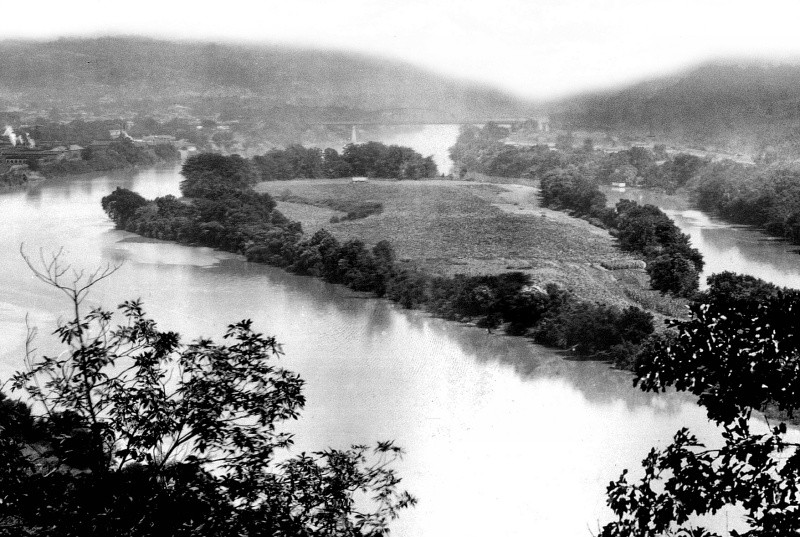
Beautiful scenery of the island and its natural landscape. c.1890.
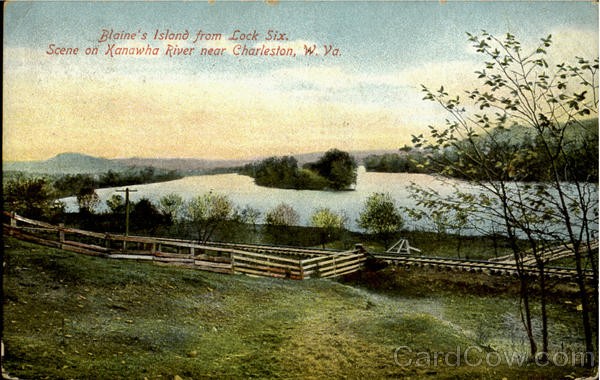
Photo of Blaine Island in the 1970s.
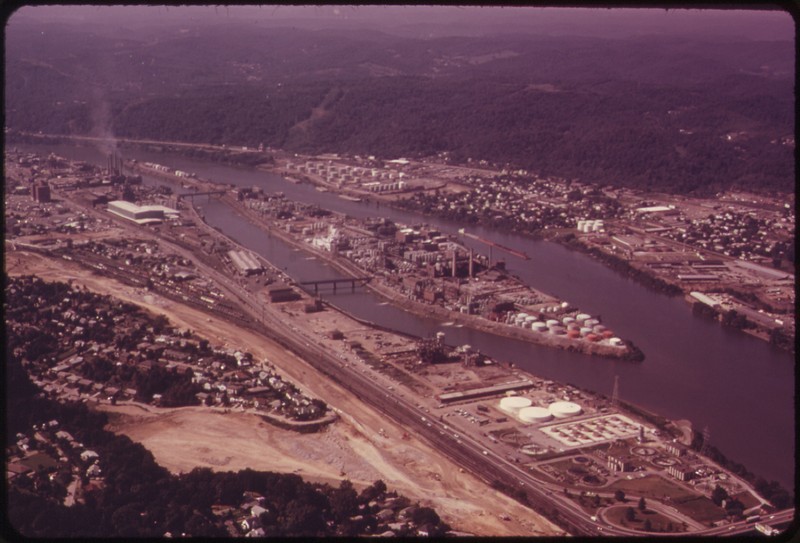
Topographic map view of Blaine Island.
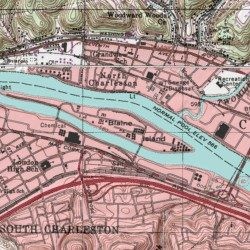
Blaine Island
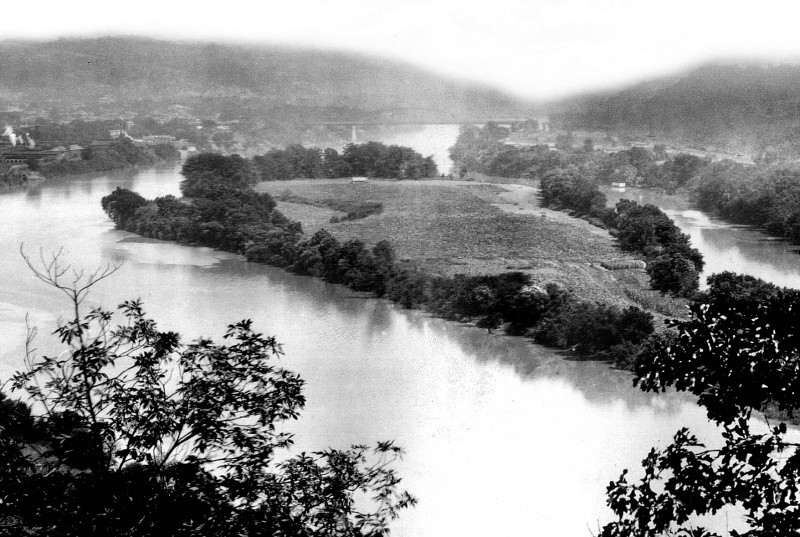
Early newspaper clipping from around 1926 describing the history of the island and Charles Blaine, for whom the island is named, and the man that supposedly traded a musket for the island from Fleming Cobb named Charles Blaine.
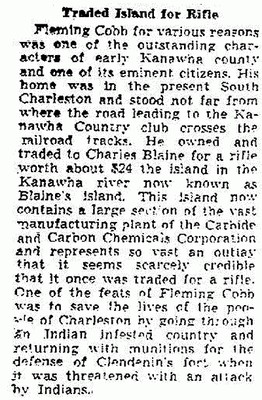
In 1927, Union Carbide purchased the island with the idea of using only half of it, with the other half being sold for a prospective housing development. Also, plans once called for a tourist camp on the island.
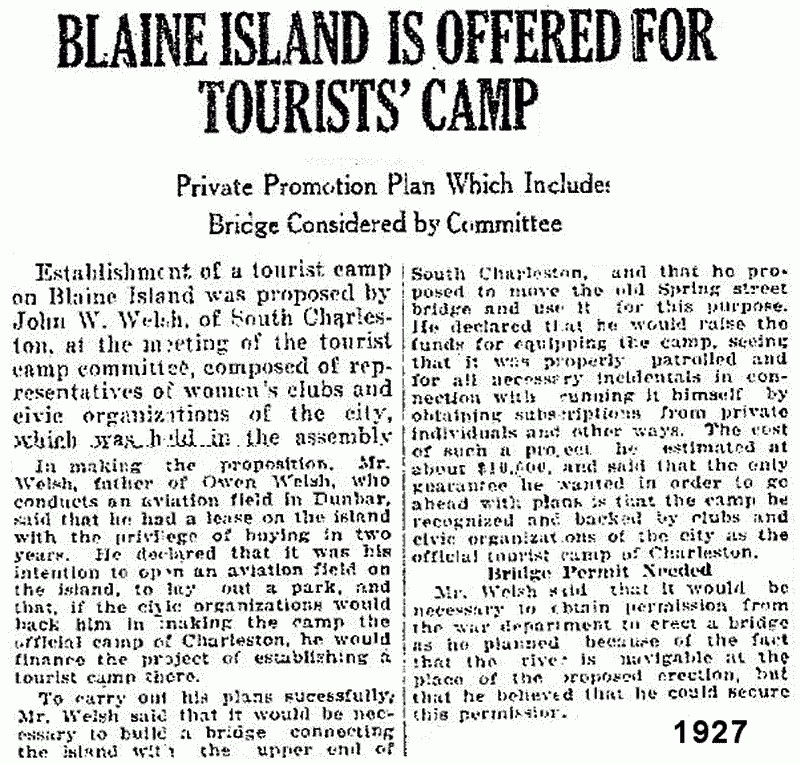
Backstory and Context
Text-to-speech Audio
Blaine Island has shown indications of being inhabited since prehistoric times. The island is over a mile long and was surveyed to be 65 acres before Union Carbide bought it in 1927.
In 1780, Fleming Cobb, one of the first white settlers of South Charleston, planted two pear trees on the island which have survived into the 20th century. Cobb inherited the island from his uncle, Thomas Upton, and traded it to Charles Blaine for a flintlock rifle. The Blaine family raised a watermelon farm on the island and before 1823, Charles Blaine built a gristmill on the island.
During the early part of the 20th century, the island contained an amusement park and a beach for swimming on the upper end half. The center of the island also contained an airfield and shows were performed for audiences. After the island was purchased by Union Carbide in the 1920s, it became an important chemical production center. During WWII, it was so important that the Coast Guard patrolled the waters around the island on a 24-hour basis. Dow Chemical and Bayer still have chemical manufacturers on the island today.
In today’s time, Blaine Island is a multi-company island used for many different purposes. Union Carbide used to have two petrochemical plants located in West Virginia specifically being in South Charleston (1925) and Clendenin (1920). The one in Clendenin was the first petrochemical plant to be operated in the entire world. The island was usually referred to by locals as “Carbide Island.” However, the island now belongs to the Bayer Corporation, who operates the Polyols Production Unit on site.
Cite This Entry
Appalachian Studies Association et. al. "Blaine Island." Clio: Your Guide to History. June 10, 2021. Accessed April 28, 2025. https://theclio.com/tour/1596/106
Sources
Andre, Richard A. “Blaine Island.” e-WV: The West Virginia Encyclopedia. 31 July 2013. Web. 13 November 2015. http://www.wvencyclopedia.org/articles/524
Finn, Scott "South Charleston." e-WV: The West Virginia Encyclopedia. 31 May 2013. Web. 09 November 2015. http://www.wvencyclopedia.org/articles/518
Union Carbide Corporation. History. . Accessed April 26, 2018. http://www.unioncarbide.com/History.
Waters, J.. Blaine Island (also known as Carbide Island). . Accessed April 19, 2018. http://www.mywvhome.com/twenties/blaine.html.

